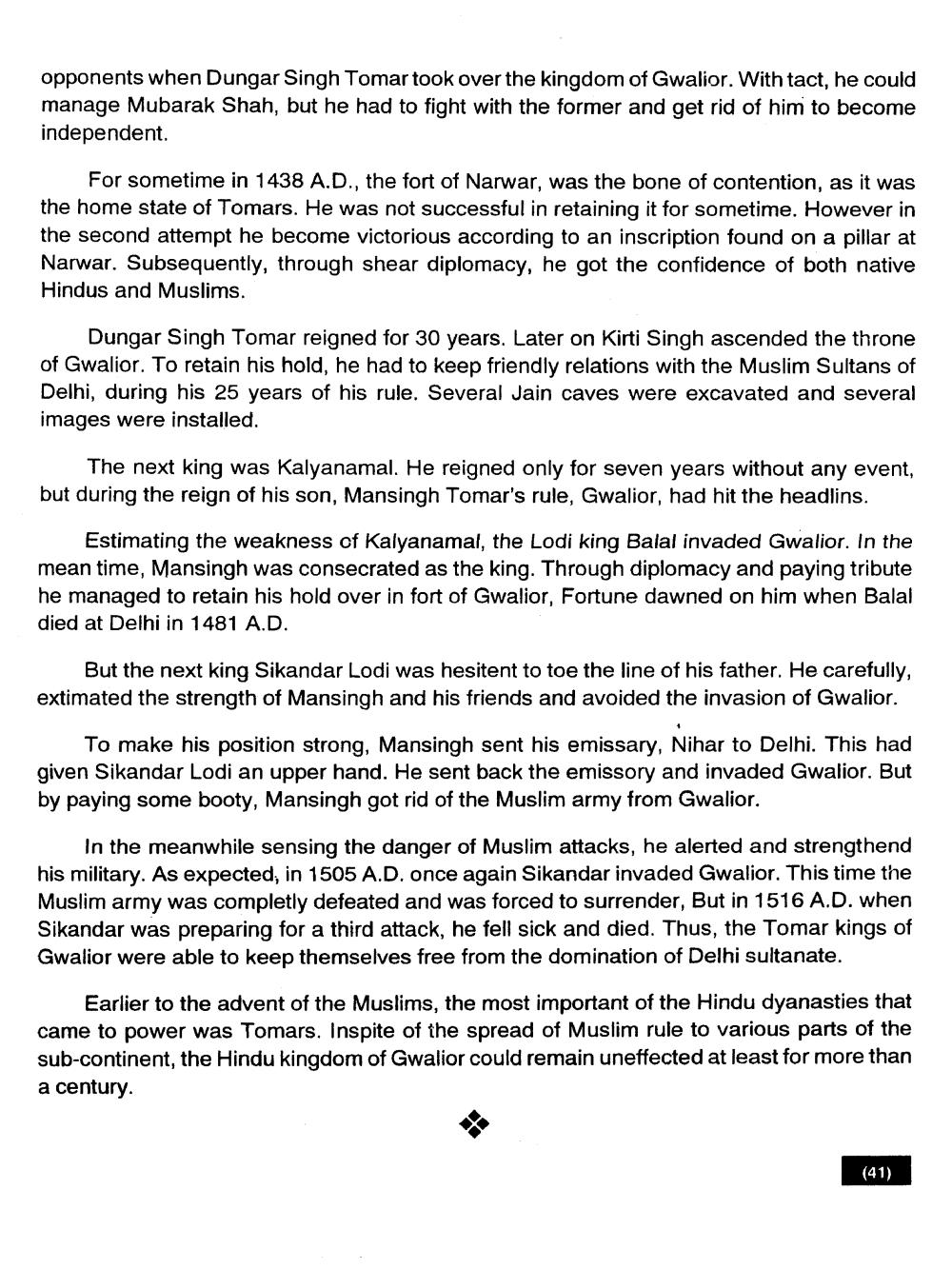________________
opponents when Dungar Singh Tomar took over the kingdom of Gwalior. With tact, he could manage Mubarak Shah, but he had to fight with the former and get rid of him to become independent.
For sometime in 1438 A.D., the fort of Narwar, was the bone of contention, as it was the home state of Tomars. He was not successful in retaining it for sometime. However in the second attempt he become victorious according to an inscription found on a pillar at Narwar. Subsequently, through shear diplomacy, he got the confidence of both native Hindus and Muslims.
Dungar Singh Tomar reigned for 30 years. Later on Kirti Singh ascended the throne of Gwalior. To retain his hold, he had to keep friendly relations with the Muslim Sultans of Delhi, during his 25 years of his rule. Several Jain caves were excavated and several images were installed.
The next king was Kalyanamal. He reigned only for seven years without any event, but during the reign of his son, Mansingh Tomar's rule, Gwalior, had hit the headlins.
Estimating the weakness of Kalyanamal, the Lodi king Balal invaded Gwalior. In the mean time, Mansingh was consecrated as the king. Through diplomacy and paying tribute he managed to retain his hold over in fort of Gwalior, Fortune dawned on him when Balal died at Delhi in 1481 A.D.
But the next king Sikandar Lodi was hesitent to toe the line of his father. He carefully, extimated the strength of Mansingh and his friends and avoided the invasion of Gwalior.
To make his position strong, Mansingh sent his emissary, Nihar to Delhi. This had given Sikandar Lodi an upper hand. He sent back the emissory and invaded Gwalior. But by paying some booty, Mansingh got rid of the Muslim army from Gwalior.
In the meanwhile sensing the danger of Muslim attacks, he alerted and strengthend his military. As expected, in 1505 A.D. once again Sikandar invaded Gwalior. This time the Muslim army was completly defeated and was forced to surrender, But in 1516 A.D. when Sikandar was preparing for a third attack, he fell sick and died. Thus, the Tomar kings of Gwalior were able to keep themselves free from the domination of Delhi Sultanate.
Earlier to the advent of the Muslims, the most important of the Hindu dyanasties that came to power was Tomars. Inspite of the spread of Muslim rule to various parts of the sub-continent, the Hindu kingdom of Gwalior could remain uneffected at least for more than a century.
(41)
(41)




